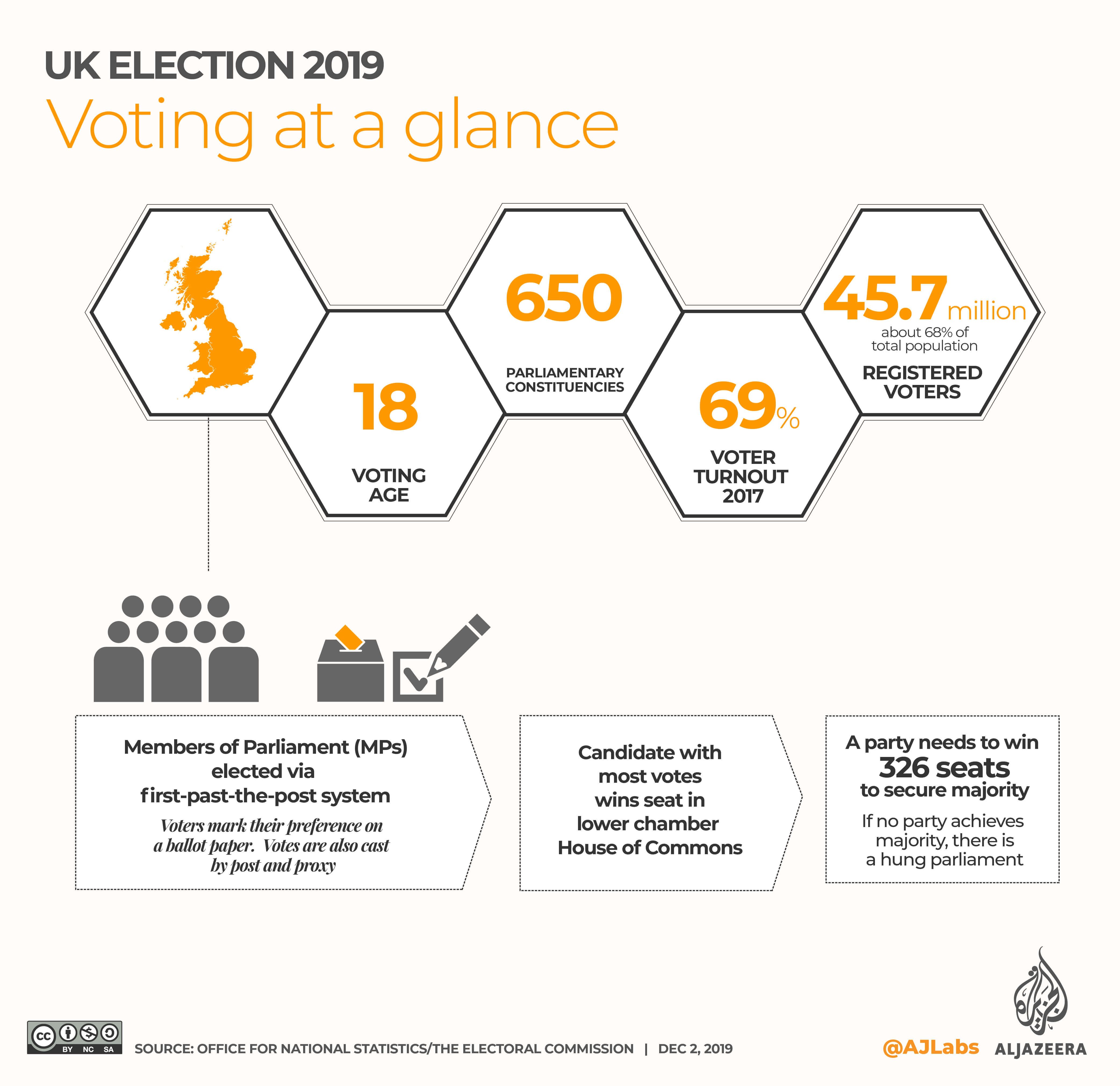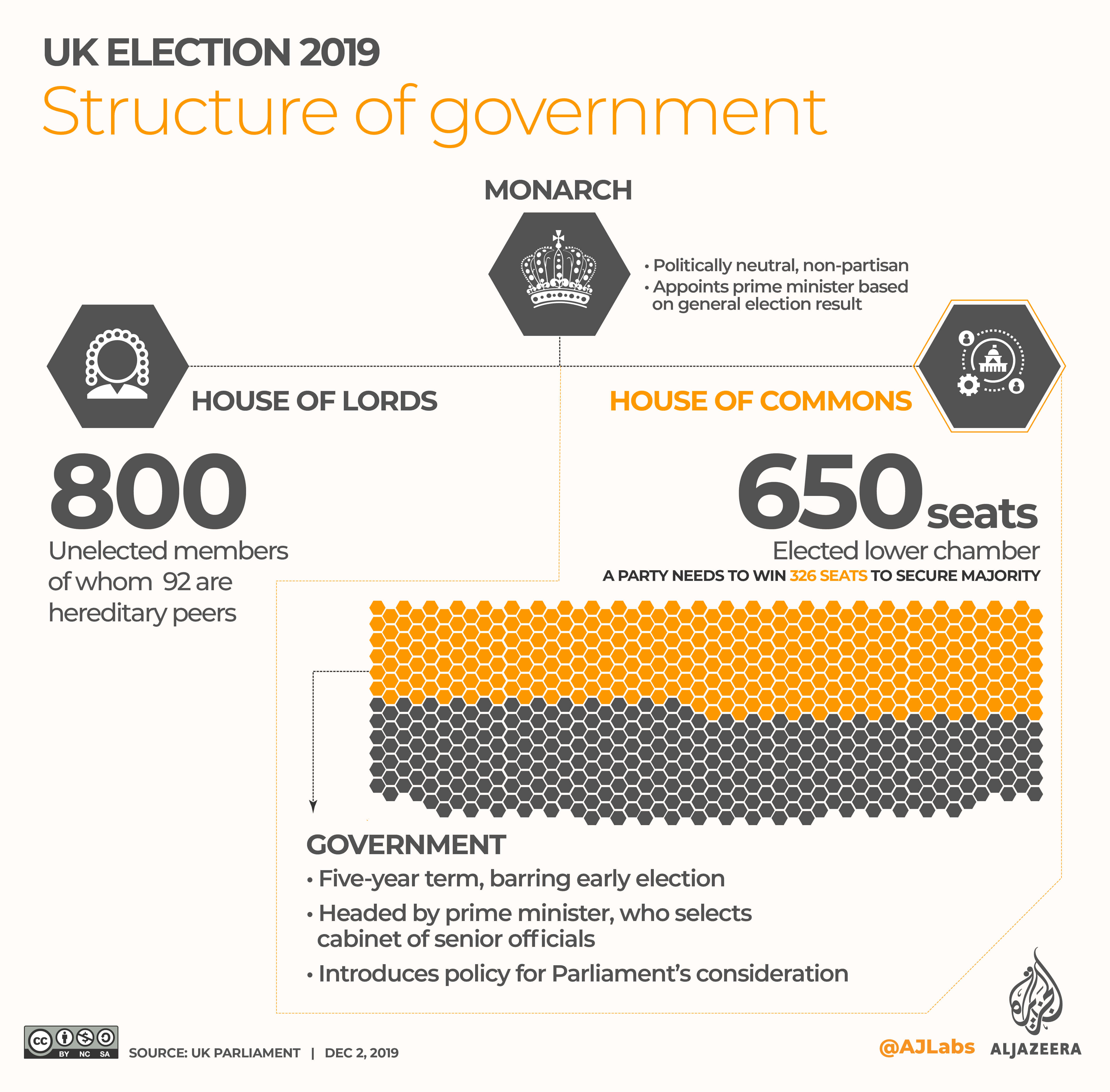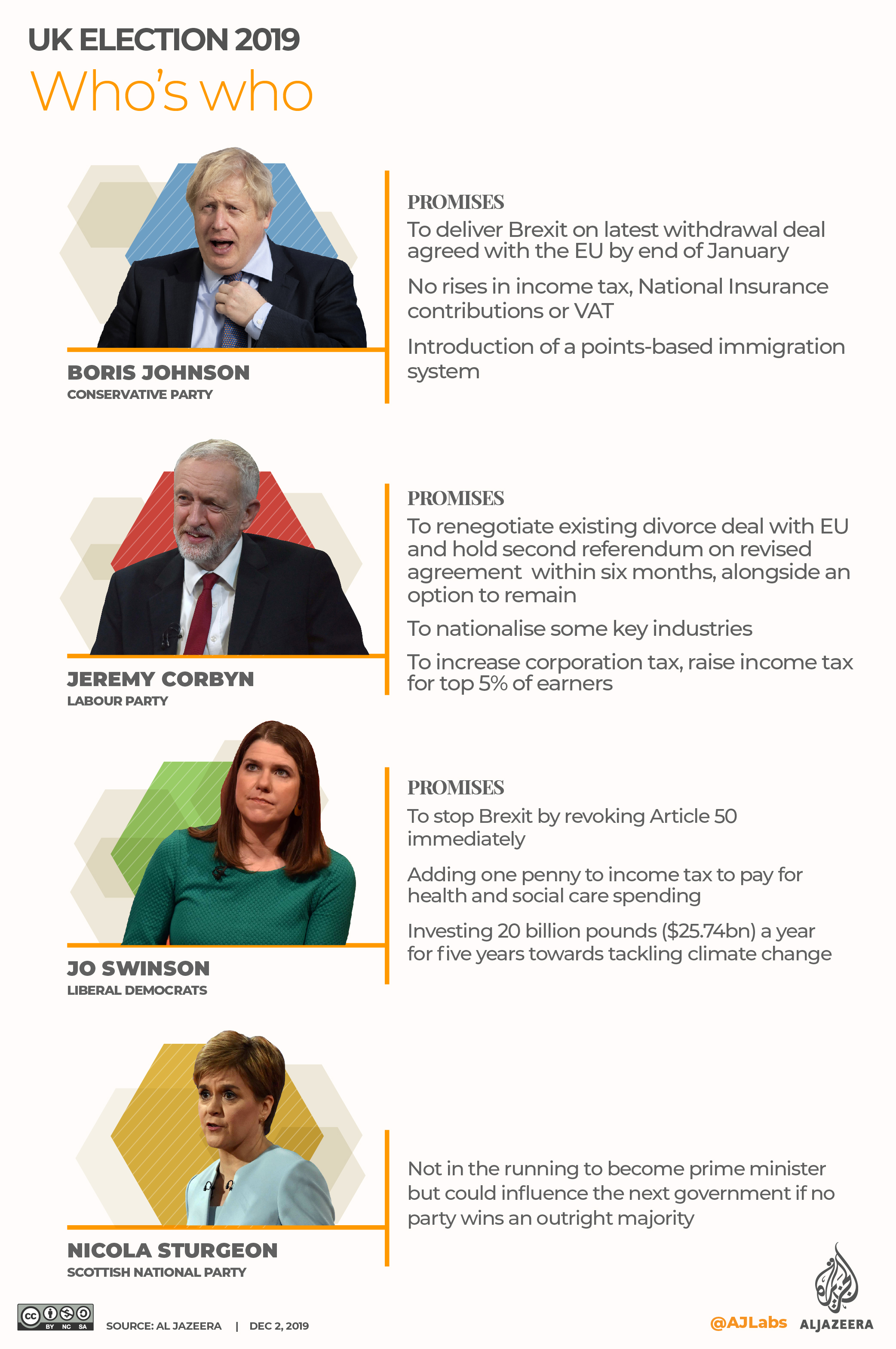Infographic: What you need to know about the UK election
Britons will head to the polls on December 12 for a snap general election called to break the UK’s Brexit gridlock.

London, United Kingdom – Britons will head to the polls on December 12 for a snap general election, which was called to break the country’s Brexit impasse.
The ballot is expected to shape how, or whether, the United Kingdom finally quits the European Union almost three and a half years after the EU referendum.
Keep reading
list of 4 items‘Absolute power’: After pro-China Maldives leader’s big win, what’s next?
Solomon Islands pro-China PM Manasseh Sogavare fails to secure majority
Pro-China party on course for landslide victory in Maldives election
Prime Minister Boris Johnson’s Conservative Party and Jeremy Corbyn’s main opposition Labour Party have presented radically different proposals for ending months of political deadlock over the issue.
The electorate, also deeply divided over Brexit, will now have its say in a poll dubbed the “most important” for a generation.
Key issues
Brexit, a sluggish economy, creaking health and social care provision, the unfolding climate crisis, and law and order are among voters key concerns.

How voting works
Voters in 650 constituencies across the UK will elect members of Parliament to the lower chamber, the House of Commons, via the first-past-the-post system. To win, candidates need to get more votes than any of their competitors.
A party needs to win 326 seats to secure a majority in the House of Commons and be asked to form a government by the monarch, Queen Elizabeth II. The members of Parliament’s upper chamber, the House of Lords, are nominated – by some main parties – rather than elected.

Structure of government
The government is traditionally formed by the party which wins a majority share of seats in the House of Commons. The government is headed by the prime minister, who selects a cabinet of senior officials.
In the event no party wins an outright majority, there is a hung parliament. In this situation, the party with the largest number of seats can try to run a minority government, seek out the support of smaller parties for a “confidence and supply agreement”, or try to build a formal coalition.

The candidates
As the leaders of the two major parties, Johnson and Corbyn are the two contenders for the UK’s highest political office.
Jo Swinson, leader of the Liberal Democrats, and Nicola Sturgeon, leader of the Scottish National Party, could also have a big influence on the outcome of the election, depending on how their respective parties fare.

The Brexit election
Johnson has promised to “get Brexit done” by the end of January if his Conservative Party scoops a majority.
However, even if Parliament passes the existing withdrawal agreement by that deadline, a potentially gruelling negotiation over the UK and the EU’s future relationship will begin as the transition period comes into effect.
Johnson says this period will not be extended past the end of 2020, when it is currently scheduled to end, but there is widespread doubt over whether a trade deal can be concluded before then. The transition period can be extended by up to two years if the UK and the EU agree.
If Labour wins, it will ask the EU for another Brexit extension to allow time to renegotiate the current withdrawal agreement.
Corbyn wants a softer divorce deal based on a new UK-EU customs union and close EU single market alignment, which will then be put to a public vote, alongside an option to remain in the bloc, within six months.
